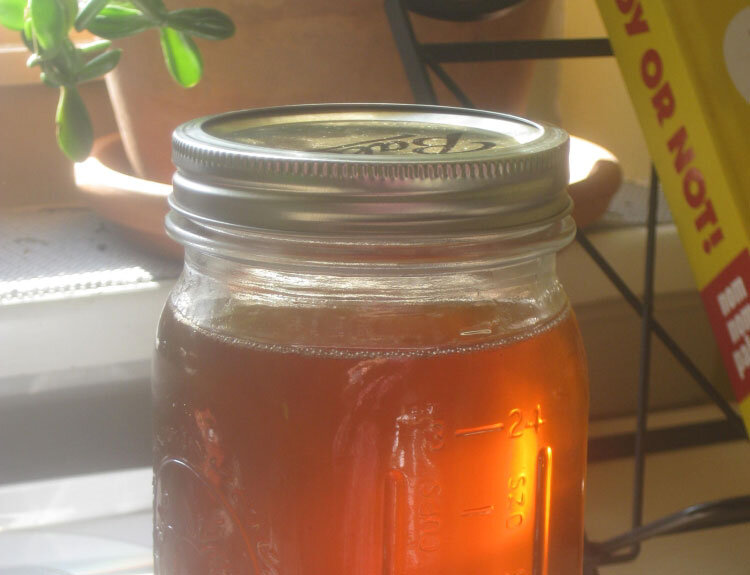The woods are secretive this time of year. Many old friends become anonymous without their leaves, at least to us novice tree people still learning our barks. One tree, though, declares itself loudly during all seasons, and that is the shagbark hickory.
Best of all, at a time when not much else is available, you can use its unmistakable bark to make a delicious and distinctive syrup. The process is simple, requires no tools or special expertise, and only takes about two hours of intermittent effort. This is foraging suited to sluggish winter blood and energy levels.
If you set out to find a shagbark, I find that eventually one will announce itself to you. They enjoy sunny edges and aren’t usually found in the deep woods. I found a whole grove of youngish trees around the corner from me in College Hill, at the edge of a large meadow. Look for a distinctive and, well, shaggy trunk outline. The shagbark is continually sloughing off its skin as a fresh layer is generated, and you will often find old bark scattered around the trunk as it sheds: smokey-gray on the outside, and often a beautiful rusty color on its underside.
Once you’re sure you’ve found your tree, break off a few strips – about five of medium length are quite enough. It won’t hurt the tree, as it isn’t affecting the cambium layer. The bark has no particular smell at this point. As with hickory wood used to smoke meat, the aroma needs to be coaxed out with heat.
Now to the kitchen
Preheat the oven to about 325 degrees. Give the bark a scrub under water with a brush to take off any dirt or larval nests. If you use a bucket, don’t let them soak in there for too long. After each piece is fairly clean, transfer it to a baking sheet. Break the bark into pieces small enough that they will fit into the pot you will eventually use to simmer the toasted fragments.
Put the bark into the oven. Within a few minutes, an intoxicating smoky, caramel scent will fill the kitchen. If, like me, you have an ancient, temperamental gas oven, monitor the heat and follow your nose. If the temperature climbs much past 350 degrees, that wonderful smell will turn horrible and acrid, and you will regret ever beginning this process. So: toast carefully for about 30 minutes. Then put the bark into your pot. Be grateful that they are already the right size, and that you are not burning your hands trying to break them now. Some silly person has made these mistakes for you in advance.
Cover the bark pieces with water. I used about eight cups, which finally resulted in four cups of syrup. Bring the water to a boil and then simmer for 30 minutes. Another element of hickory flavor, less obviously pleasant, will become apparent now – more leathery and complex, as the wine sophisticates might say.
Strain the liquid through a cloth and see how much you have – I had four cups. Pour into a saucepan, and add an equal amount of sweetener. Some people suggest maple syrup or honey, but these already have their own distinctive flavors. To appreciate the hickory taste, I added four cups of a cheap sweetener with no character of its own: good old table sugar.
I simmered the liquid for about 30 minutes, occasionally stirring and skimming any dark foam that gathered at the edges. Finally, I had four cups of dark, sweet, smoky, leathery hickory syrup. I’ve read that the brew is full of magnesium. I am assuming this is a good thing. Whether you happen to be in need of magnesium or not, the result is highly delicious.
Washed shagbark ready to be toasted
Homemade Shagbark Hickory Syrup
I love it in the usual syrupy places – pancakes and oatmeal. It also harmonizes beautifully with coffee. I can imagine it in cookies and ice cream and glazes. You know, all of those bad things. Still, with months to go before the sap starts running, it is a lovely winter gift, one to be grateful for.
Sources:
Many thanks to Leda Meredith, whose excellent recent book, The Skillful Forager, is the one that informed me that making hickory syrup was possible and gave me the basic process.
Akshay Ahuja writes locally about food for Cincinnati Magazine and others. He also writes for the Dark Mountain Project in the UK, where his most recent essay looks at the removal of invasive species and what it says about our relationship with wild places.





